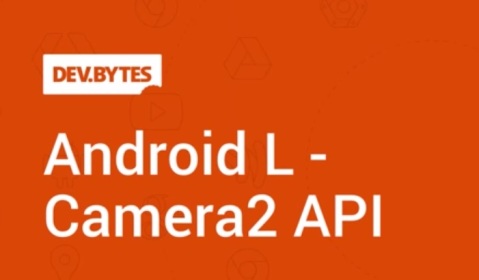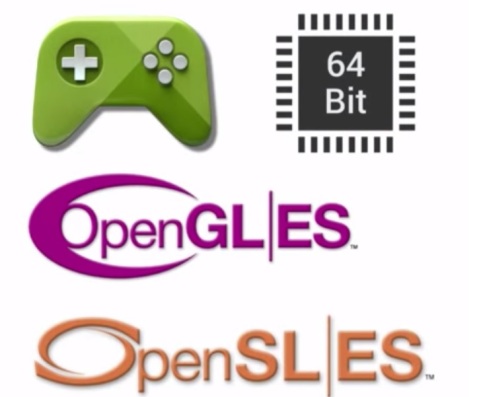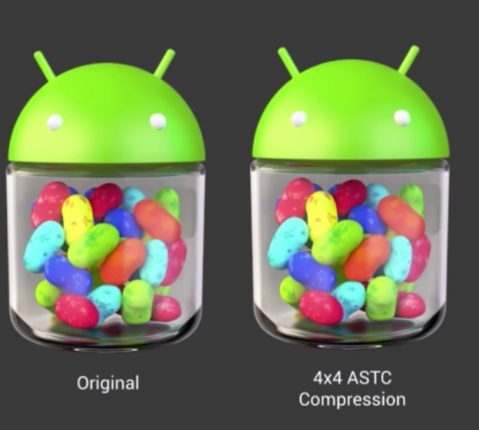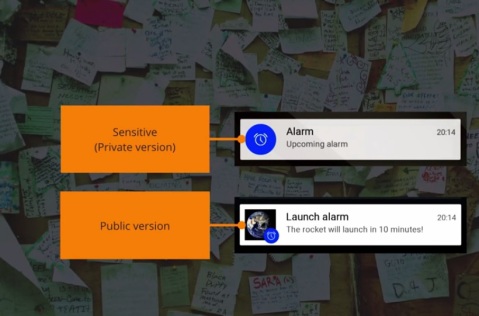Learning About Fascinating Features of Android L Camera2 APIs
In order to understand the amazing functionality offered by Android L Camera2 API, having a basic knowledge about the Kitkat Camera API can prove really helpful. The KiaKat Camera API was essentially designed for straightforward camera apps which resulted in restricted access to streaming image data, limited info about camera status and unavailability of manual capture control. The Android L Camera2 APIs have been deigned to overcome all these limitations besides enabling developers to create some really cool camera apps.
The most important aspect about these new APIs is that rather than being designed as a one way, stream they are created in the form of a pipeline. This enables developers to pre-configure output surfaces and attach the same to the camera. Each individual surface can act as the board on which a stream of image buffers can be placed while also enabling users to pass requests through an image capturing session. Each request will produce an individual image and the API’s make it possible to pass multiple requests simultaneously which will be processed asynchronously. The process of sending requests is of course carried out using a program code.
There are also a variety of surface types that can be used as the destination for image buffers. These include Texture View for pre-viewing images, Media Recorder for video recordings and Render Script Allocation for YUV processes. It is also important to consider the size of the surface while creating it and setting the size is again a process which is carried out through appropriate code snippets. Once the surface has been created, it is possible to create a session which again is a programmatic process and is necessary for handling the requests.
Depending on your specific needs, you can choose to create a request builder in easy manner with the help of any one of the multiple request builder templates available with the API. The API’s also makes it possible to submit requests in two different forms. The first is type is capture which is used for a single image captured with the help of a specific Capture Request. The other type is set Repeating Request, which as the name indicates enables you to capture continuous images by repeatedly using a given request until it is exclusively stopped.
Here it is important to understand that you might need to adjust the camera setting as per your specific needs just before submitting the requests. The API’s allow you to modify nay properties of the builder before building a request, including white balance mode, effects and even the flash settings for the camera.
Getting Familiar with the Functionality of Enhanced Notifications Feature in Android L Developer Preview
The Android L developer has created quite a buzz with its new features and enhanced functionality. Enhanced notifications are amongst the various features that have received a significant face lift in the L developer module, making it possible to create and display notifications almost anywhere, including on a locked screen in an Android device. In fact the latest modification to the notifications feature will enable developers to provide a wide range of options to use them in a better manner with their device.
A major change that has been incorporated in L developer is to merge the notifications shades with locked screens. This means that users no longer need to unlock their phones simply to gain access to notifications as they can easily view this information even on their locked screen. Since the functionality is active by default in L developer, programmers generally don’t have to work much in this particular area.
Apart from ensuring ease of access to notifications, the L developer also focuses on diverse security parameters by adding the visibility feature to notifications. The visibility feature comprises of three levels. The first of these levels is private, which is the default setting for all notifications and prevents the contents from being displayed on locked screens. The second level is public in which case the notifications are always displayed irrespective of whether the screen is locked or not. The third level is secret wherein the notifications are not displayed at all when the screen is locked.
Another feature that has been added to notifications in L developer is heads-up, which enables the users to remain alert about important information even when they are performing some activity on the device. The feature ensures that important notifications are displayed in the foreground over any app, when the screen is on and unlocked. These might include notifications for incoming calls and other such important information with the only difference being that now they will appear in a small box just near the top of the screen rather than in the usual full screen mode.
One interesting addition that has been made to the notifications is the ability to categorize notifications based on the level of priority. Moreover, users can also choose which notifications are urgent and hence need to be displayed based on whom they are being sent from. This actually helps in cutting down the need to check the phone to see if the notification received is important enough to get disturbed during an important task.
Learning About The Additional Features Offered By Android L For Games Developers
Android L which is the code name for Android Lollipop is all set to revolutionize the game development scenario. The new technology adds on the current features offered by Google game play to enhance the development experience of gaming professionals. Discussed below are some prominent features that have been added in the latest Android L version for enhanced user experience.
Cloud Save: The cloud save feature offered by Google game play has been enhanced to provide a better user experience by enabling them to upload up to 3MB of game data in addition to a cover image. The image serves as bookmark enabling the users to resume from where they might have left the last time.
Quests: This is a new feature that enables users to trigger events in the game. It allows them to makes the games lively and dynamic in a fun filled and simple manner without the need to download a game update onto their system.
64-Bit Architecture Support: Given the fact that the 64-bit hardware doubles the number of available registries, ensures that providing support for the same ensures a really great gaming experience. To make things simpler, Android L also features support for target platforms including arm64-v8a, x86-64 and mips64.
Open GL ES: For graphic programmers, Android L offers the really cool Open GL ES feature that make for the best of graphic interfaces. The feature can be used to create enhanced visuals for the game besides improving its performance in a significant manner.
Three New Shaders: Although this feature is still in the pipeline, the addition of three new shaders is surely going to take the quality of game graphics to an entirely new level. The use of these shaders will give a more realistic feel to the animated graphics used in a game, making it more thrilling and exciting.
ASTC Support For GPU: ASTC stands for Adaptive Scalable Texture Compression and it enables developers to copy the texture data directly into the graphics memory to minimize loading time. The ASTC basically processes a texture to create a lower size copy of the same, making for extremely minor quality differences which are not visible to the naked eye and hence are preferred for saving resource usage.
Enhanced Audio: Android L features a lower audio input latency which reduces the slag between recording the audio and reproducing it for the users. Support is also provided for multichannel mixing and floating point baffles to ensure a truly mesmerizing user experience through great sound support.
For more information visit:
https://www.youtube.com/watch?v=qW3Ufg1JNRE&index=5&list=PLWz5rJ2EKKc_rbUGf2brcwvZDwziVdtU6
Getting Familiar with the New Features of Android 5.0 Lollipop
Google is renowned for providing technologies that ensure a seamless experience for users irrespective of the system on which they use it. In keeping with this tradition the company has come out with the some really innovative features in its latest Android 5.0 Lollipop. The most important of these features are explained in brief as follows.
Material Design: This new feature approaches the visual, motion and interaction design across diverse platforms in a comprehensive manner. It offers a perfect solution for developers who need to design apps for a wide range of devices. Apart from featuring a complete set of tools, material design also offers great flexibility in terms of bold colors, responsive UI patterns and themed elements.
Improved Notifications: Android 5.0 Lollipop comes with a new enhanced set of notifications that offer visibility controls to enable users to manage the information that can be viewed even on locked screens. In addition, the system uses heads-up notifications to display vital information in small floating windows that appear above any app running in the foreground.
WebView Updates: Android 5.0 L features the Chromium 37 update of the web view, which has enhanced the security, stability and bulk fixing features. Most importantly it will now be possible to update the web view directly from Google play as it has been detached from the system.
Project Volta: This feature focuses on ensuring enhanced battery life and providing power optimization features across multiple platforms. It offers a collection of new tools and APIs that help in conserving system power without compromising the efficiency of the app performance in any manner.
Android Runtime (ART): The ART feature offers Android users several advantages such as ahead of time compilation, garbage collection with greater efficiency and better features for development and debugging. This generally helps in enhancing app performance without the need for code modification.
64-bit support: With the 64-bit support, the Android 5.0 makes way for more address space and enhanced performance in case of specific compute workloads. While Java apps can now directly run on this technology, the developed in apps using native code can use the updated NDK released simultaneously.
Advanced Camera Capabilities: This is a feature designed for photo lovers who can now easily capture and process images. In addition, it also enables the user to control aspects such as exposure time, ISO sensitivity, and frame duration, on a per-frame basis.
Connectivity Features: The new connectivity features enable the devices to function in Bluetooth Low Energy (BLE) peripheral mode make their presence known to the nearby devices for easy data sharing.
For More information visit https://www.youtube.com/watch?v=um1S2u022HA&list=PLWz5rJ2EKKc_rbUGf2brcwvZDwziVdtU6















Recent Comments